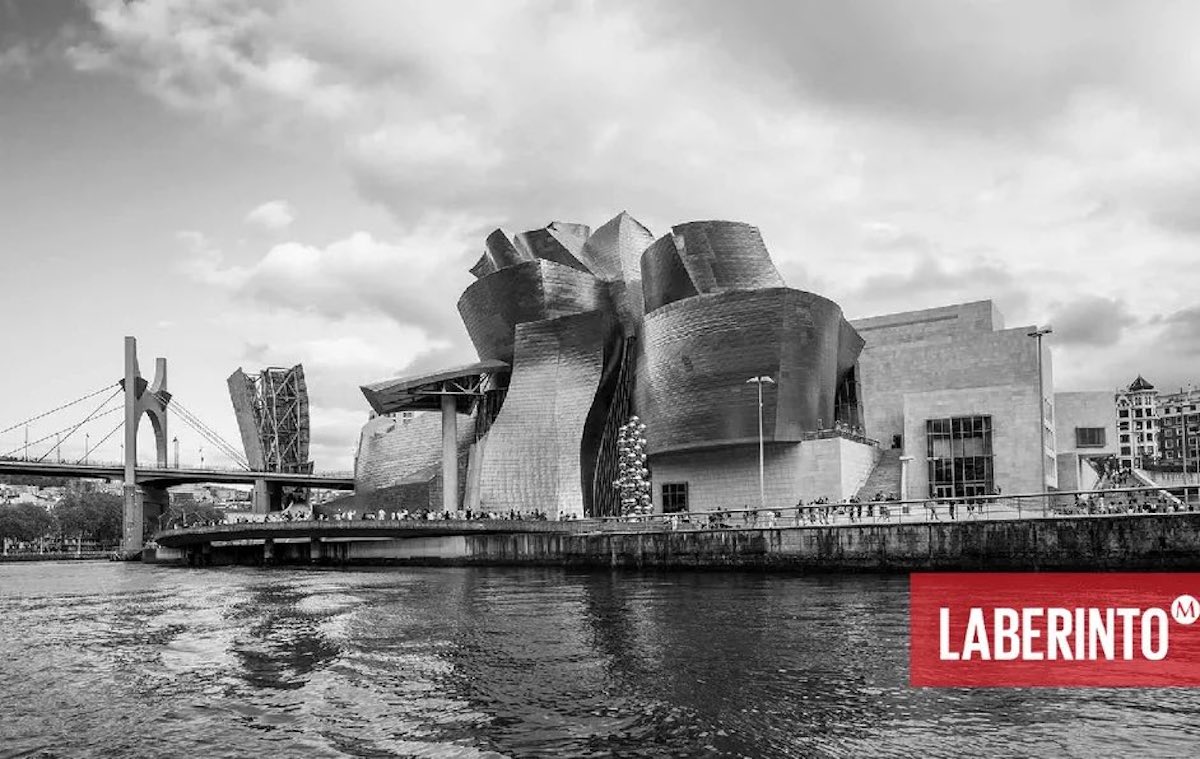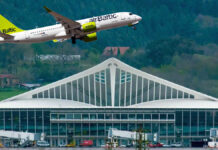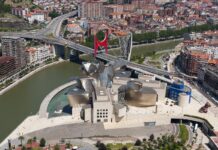The Mexican daily Milenio has just published an article about the Guggenheim Museum Bilbao, in which its author, Víctor Núñez Jaime, introduces this museum by explaining that this year is its 25th anniversary, and just how important it has been for the city and the country.
This article, in its opening two paragraphs, manages to pack in all the erroneous simplifications of what has happened (and is happening) in the Bilbao metro area over the last forty years. It’s incredible to think that someone can believe that a single building, even the Guggenheim Museum Bilbao, can be the cause of the whole of the transformation of the city that is home to it.
But that’s not all: the article also insinuates, says without directly saying, that the key player in what happened was “Mamma European Union,” which at that time was “still imposing and financing the modernization of Spain.”
Well, starting at the beginning, the contributions of European funds to the urban transformation of the Bilbao metro area were neither significant nor essential. Were there some? Yes. But would the lack of them have changed anything? No. It might have slowed down the pace a bit, but it would not have meant that what happened wouldn’t have. This is because, among other reasons, the financing of everything, including the museum, was the responsibility of Basque institutions, and therefore Basque taxpayers.
We must recall that in 1997, the year the museum opened, the three Basque revenue agencies of the Basque Autonomous Communities collected €6.351 million, from a population of just over two million. For comparison, Slovakia, which had just over five million people in 1997, that same year dedicated €9.416 to public expenditures.
So we can therefore forget “Mommy EU” as an explanation for the construction of the Museum, and for most everything that happened in the Bilbao metro area.
But things don’t stop there. According to the article, the people of Bilbao must have completely given up, buried in soot and terrorism, and the Solomon Guggenheim Foundation had to come in from New York and rescue them in order to give the city a future.
The author forgets that the construction of the Bilbao subway had gotten started in 1988, a few years before the museum, and that almost €700 million were dedicated to the construction of Line 1 (that number is now up to €5 billion). A full 84% of that was covered by Basque institutions, with another 13.5% by Spain (European funds to the project were practically symbolic).
He similarly forgets that in 1979, the Integrated Wastewater Plan for the River of Bilbao was inaugurated, with a cost of over €1.2 billion (paid by its users, the Basques). Without that project having come true, the Guggenheim Bilbao, on the riverfront, would never have been possible.
We won’t go on. All the way back in 2011, we wrote an article on the main investments that explain the transformation of the Bilbao metro area. Indeed, we’ve actually written many more. Some of them, as in this case, were written to discuss how little (if at all) the author understood what had happened; others were written to thank those who had done their homework.
No one came to “save us.” Indeed, it was really the other way around: Basque institutions worked hard to bring the museum to Bilbao. By the way, it’s interesting to read the Solomon R. Guggenheim Foundation Director Richard Armstrong‘s explanation for the key reasons for the success of the Bilbao Guggenheim and, therefore, for the whole urban transformation process of which the museum forms a part.
To understand what happened in Bilbao, one must simply read the words of Frank Gehry himself, spoken in a 2017 interview.
Then there was the claim that:
«Fue Frank Gehry, cabeza de una de las empresas de arquitectura más influyentes del mundo y Premio Pritzker, quien se encargó de diseñar el nuevo centro de arte. Él y su numeroso equipo tardaron un lustro en levantar un gigante de titanio que finalmente se inauguró en el otoño de 1997»
It was Frank Gehry, head of one of the most influential architectural firms in the world and Pritzker Prize winner, who took charge of designing the new art center. He and his large team took a year to raise the titanium giant, which was finally opened in the fall of 1997.
Gehry has an architectural studio, not “firm.” The construction of the museum, the responsibility for taking Gehry’s designs and making them a reality, was in the hands of the Basques. The Bilbao Guggenheim Museum exists thanks to the commitment of Basque institutions, Basque taxpayers, the Basque engineering firm IDOM, and the skill of Basque building companies. This compares significantly with a similar project in Los Angeles, designed by Gehry long before the Guggenheim, but only built quite later, the Walt Disney Concert Hall in Los Angeles.
Then, the second paragraph concludes with another collection of falsehoods:
«la zona se llenó de nuevos edificios, el casco viejo de la ciudad se revitalizó (con un toque gourmet) y sus habitantes se especializaron en ser grandes anfitriones.»
The area filled up with new buildings, the city’s old town was revitalized (with a gourmet touch), and its residents became specialists at being great hosts.
The area that filled up with buildings is a project led by César Pelli, the Master Plan of Abandoibarra. This urbanization project was set in motion in 1993, with an international consultation to define the urban planning for the Abandoibarra area. That means it’s four years older than the museum.
The Plan for the recovery of the historic center of Bilbao, usually called Old Town or Casco Viejo, got started in 1979, and turned into a “reconstruction” after the 1983 floods.
Neither the quality nor the prestige of Basque cuisine, nor the presence of pintxo bars and restaurants in the Old Town, have anything to do with the museum. And we Basques have always been great hosts.
No one can doubt that the Bilbao Guggenheim Museum is one of the greatest Basque (and world) projects of the end of the 20th century. Nor can there be any doubt that it is one of the most efficient international promotional tools Bilbao and the Basques have had since its construction began. Its influence and prestige are essential for the city and for the whole of the Basque Country.
The €133 million spent in building and opening it would have only had a fraction of the impact if they’d been spent on marketing. You could say it’s the best-spent 9 km of freeway in history. And this comparison is apt because the 4.4-km stretch of the freeway to Alonsotegi, built in 2007, cost just over €55 million.
Given how easy it is to be properly informed… Indeed, the Bilbao Metrópoli 30 is always thrilled to offer information to journalists who are interested in writing about Bilbao. Therefore, there’s no excuse for so much bad information in so few lines.
Milenio – 7/1/2023 – Mexico
El gigante de titanio que transformó una ciudad
Hace tres décadas, cuando Mamá Unión Europea seguía imponiendo y financiando la modernización de España, a Bilbao (País Vasco) le seguía costando dejar atrás su imagen de ciudad industrial, gris, sucia y aburrida. El hollín de la siderurgia y el terrorismo etarra, además, parecía determinar el carácter cotidiano de los bilbaínos y, a ambos lados de la ría del Nervión, la vida se estancaba. El impulso que necesitaba esta villa portuaria llegó desde Nueva York, de la mano de la Fundación Guggenheim, que eligió abrir aquí uno de sus museos.
(Follow) (Automatic translation)


Last Updated on Jan 15, 2023 by About Basque Country































